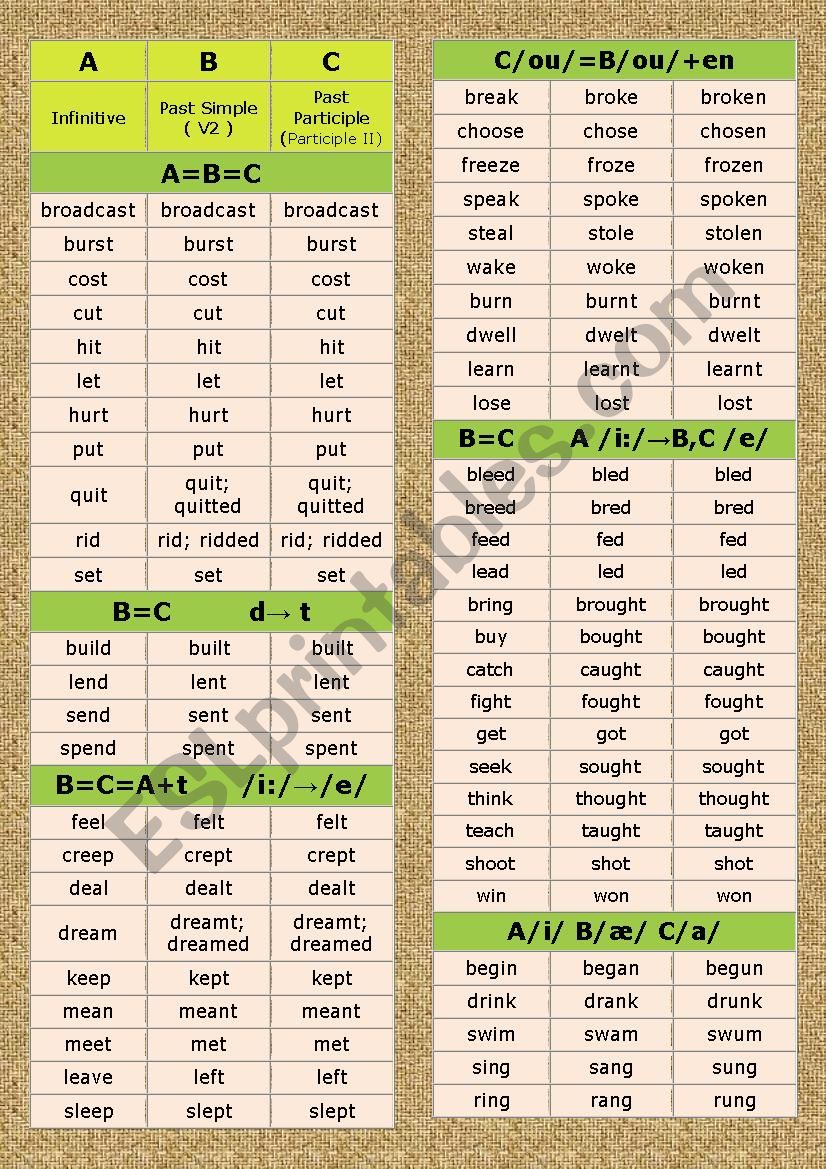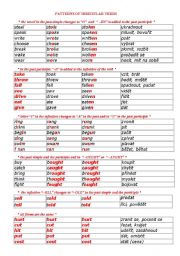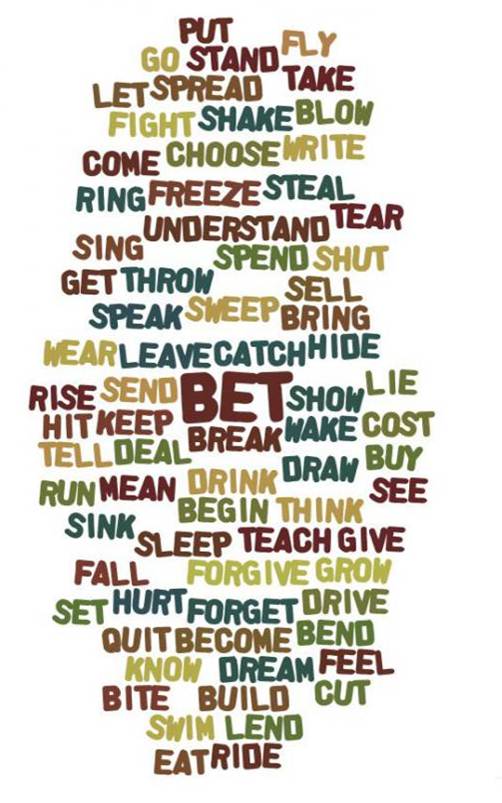


Simple Past – CORRECT conjugations without auxiliary verbs For example, when conjugating the verbs see and eat, the following sentences would be INCORRECT. So remember, irregular words should not be conjugated like regular verbs. Yesterday, Joe and Sally were in class.However, irregular verbs do not follow a consistent pattern when forming the simple past or the past participle for example, be becomes was (singular) /were (plural) when forming the simple past and been when forming the past participle. Notice below, that the auxiliary verbs have/has are being used to show the past participle, but they are not used in the simple past.

Regular verbs form the simple past and the past participle by adding an -ed or -d to the end of the root for example, create becomes created and text becomes texted when forming the simple past and the past participle. Auxiliary verbs are helping verbs that give more information on the time or mood of the main verb.

The past participle is combined with auxiliary verbs to form perfect, passive and conditional tenses. The simple past is used to talk about completed actions in the past. In English, it’s important to focus on the conjugations of irregular verbs when talking about the past, specifically the simple past and the past participle, because this is where the irregularities occur. The root is the base form of a verb from which the other forms are constructed. So, you need to learn irregular verbs if you want to learn English, and old fashioned memorization is the only way to learn all the conjugations.Įnglish verbs have five basic forms used to express time: the root (sometimes called the base form), third-person singular, the simple past, the past participle and the present participle. –> Had is a conjugation of the irregular verb have. > Went is a conjugation of the irregular verb go. > Saw is a conjugation of the irregular verb see. Not only are irregular verbs common, but some of them are necessary for constructing basic sentences, such as: Examples: However, irregular verbs account for approximately 200 of the most commonly used English verbs. On the other hand, irregular verbs do not follow a consistent pattern when conjugated. Most English verbs are regular verbs, and these follow a consistent pattern when conjugated. In the English language, we use verbs to describe our actions or states of being, and there are two types of verbs: regular verbs and irregular verbs.


 0 kommentar(er)
0 kommentar(er)
